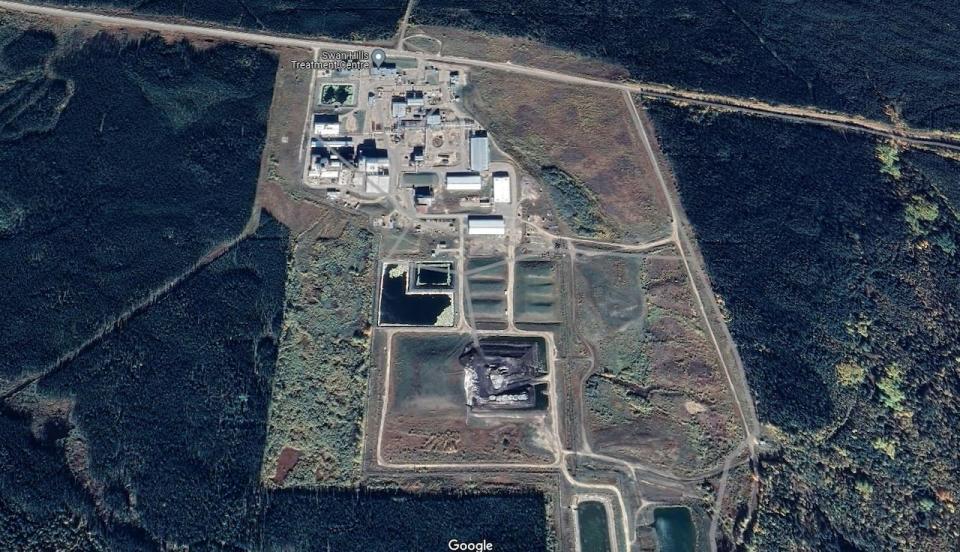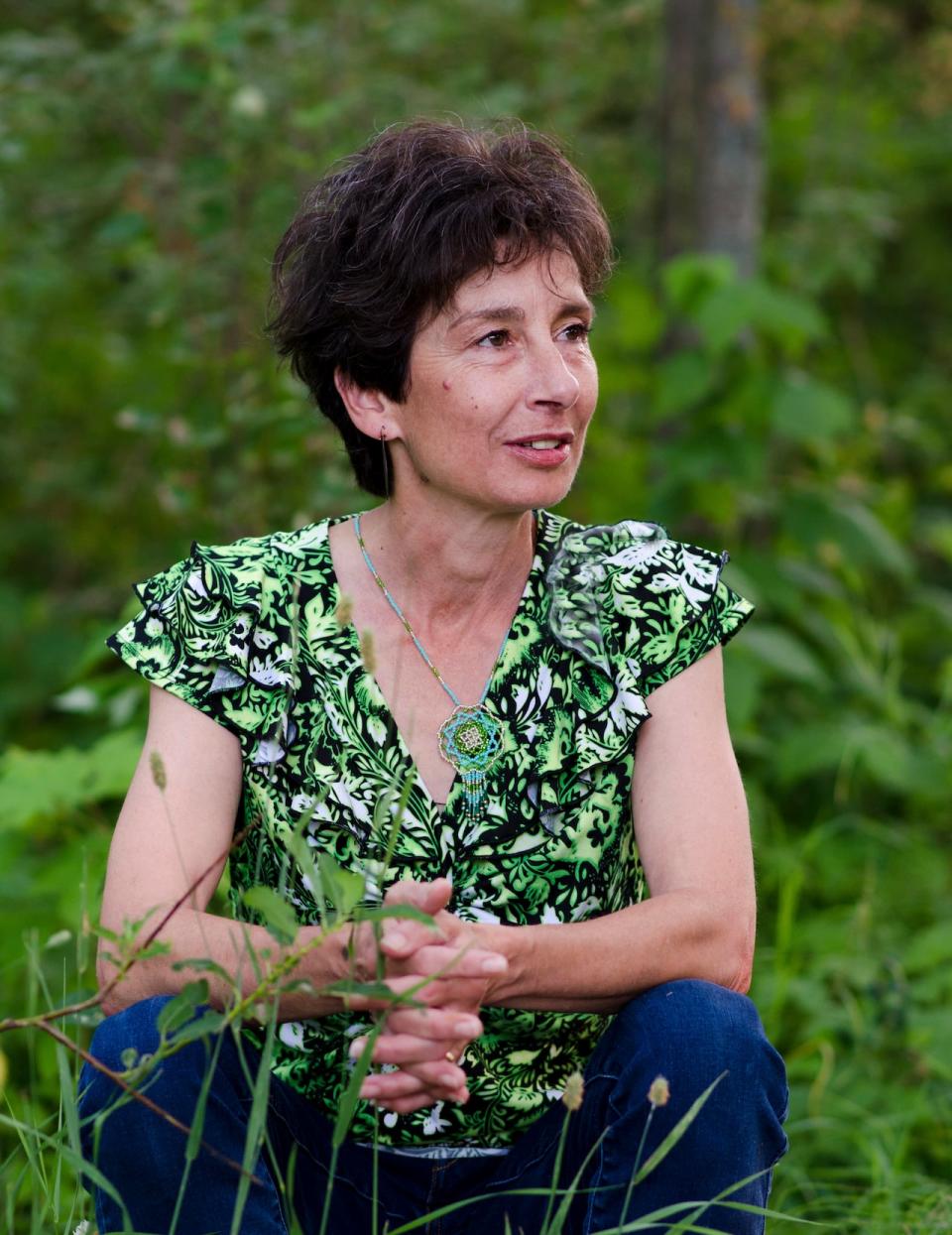A contentious hazardous waste plant in northern Alberta is slated to close. What's next?

The hazardous waste plant near the town of Swan Hills is something of a Rorschach test.
For some who live in the area, the facility offers much-needed tax revenue and a reliable paycheque, providing a steady counterbalance to the volatility of the oil and gas industry.
To others, its an environmental hazard with a track record of multiple explosive unplanned releases of hazardous "forever chemicals."
To the provincial government, it's a financial burden both dead or alive, given its high operating expenses and costly estimate for site clean-up — more than $220 million, considerably higher than previously reported.
Accordingly, the looming closure of the facility two years from now is either long overdue or a serious problem, depending on your perspective.
"There's way more people with concerns than people who think it's great," says Jule Asterisk, an environmental advocate and longtime resident of the area.
"The townspeople were quite supportive in the beginning," says Jeff Goebel, a councillor for the town of Swan Hills.
"And that support has not waned at all the whole time I've been here."
A complicated history
The facility, officially called the Swan Hills Treatment Centre, has been processing various types of hazardous materials since it opened in 1987. But much has not played out as anticipated.
The facility was created, in part, to process and destroy polychlorinated biphenyls, better known as PCBs. These carcinogenic chemicals were widely used in Canada, mainly in electrical components. They fall under the category of persistent organic pollutants, or "forever chemicals," because they don't easily break down — they simply build up in organisms over time.

The Swan Hills Treatment Centre is located about 250 kilometres north of Edmonton. (Google Earth)
"The means that, even if we're not using them anymore, they can still have an impact," says Shira Joudan, an assistant professor environmental chemistry at the University of Alberta.
The SHTC is unique in Canada for its ability to destroy high volumes of high-concentration PCBs through incineration at extremely high temperatures. But it can also process many other types of hazardous materials, including household hazardous waste collected from around the province.
The facility began as a joint venture between the provincial government and the private sector, with a sweetheart deal that guaranteed a profit, subsidized by taxpayers if necessary. But the projected market of producers paying to have their dangerous wastes incinerated didn't materialize as planned.
In 1985, the Alberta government put a stop to the importation of hazardous wastes into the province. Then in 1993, new legislation exempted hazardous oilfield wastes from being required to be sent to Swan Hills — a lobbying victory for the energy industry, but a blow to the profitability of the treatment centre.
Then on October 16, 1996, a furnace malfunction caused the release of PCBs, dioxins and other toxic compounds. A health and risk assessment study was ordered by the government to determine the exposure to humans. That study, published in 1997, resulted in advisories for consumption of wild game and fish taken within a 30 km radius of the treatment centre.
While that study was still underway, an explosion occurred on July 21, 1997. Although the company operating the facility at the time said there was "minimal" chance of contamination, PCB levels measured around the plant were as much as 14 times above average.
Since 2001, the province has owned the facility, with a succession of companies contracted to operate it — currently Veolia, a French multinational. In 2009, another explosion and fire caused the facility to shut down for 10 months.
The environmental advocacy group Keepers of the Water — formerly Keepers of the Athabasca — has been fighting the continued operations of the plant for years, pointing in particular to these numerous accidents where hazardous chemicals were released into the environment.

Jule Asterisk is an environmentalist and longtime resident of Slave Lake (Submitted by Jule Asterisk)
"Those are a huge concern because in an unplanned release, there's uncalculable amounts of contaminants that are released into the air and people want to know, Where are these coming down and what kind of health effects do they have?" says Asterisk, who has worked with Keepers on the file for many years.
In 2015, Keepers filed a statement of concern objecting to the renewal of the SHTC's operating permit on the grounds of environmental contamination. When the permit was renewed in 2019 despite those concerns, Keepers filed an appeal, which is still pending.
"We've had only one decision from Alberta's Environmental Appeals Board back in March 2023, and otherwise, our substantive concerns about the plant have not yet been heard," says Susanne Calabrese, a lawyer for Ecojustice, a legal charity representing Keepers of the Water in the appeal.
In 2020, the province announced the plant would shut down after 2025 due to high operating costs, and because federal legislation requires high-concentration PCBs to be out of use by the end of that year. But the closure of the plant doesn't erase the group's outstanding questions about the impacts to human health and the environment, says Asterisk. They want the province to investigate further and be more open with the public about the findings.
Impact of closure
But not everyone is cheering the facility's impending closure. The treatment centre still employs dozens of people in the town of Swan Hills and surrounding area.
"They are a fairly significant employer for the town and the region," says Goebel, who used to work there himself.
"It's definitely going to be a hit to our town."
In response to requests for an interview, the administration of Big Lakes County, where the facility is located, instead provided a 2023 briefing document outlining its argument to the provincial government for keeping the treatment centre open.
The document says the closure of the facility "will be a devastating blow to the community of Swan Hills and Big Lakes County. At the ground level, this facility is much more than simply a facility that processes waste. This facility provides 110 direct good-paying, stable jobs."
However, Alberta Infrastructure told CBC News that the plant currently has 47 employees and operates four days a week.
The lobbying efforts began in 2021, and the county said in an email that the conversation was continuing.
"While no solution has been proposed to date, the Town of Swan Hills, Big Lakes County and the Provincial Government are actively working to find a solution that fits the needs of all parties."
Health concerns
The advisories regarding consumption of wild game and fish, implemented after the 1996 accident, are less restrictive today but still in effect, most recently updated in 2012.
Goebel, the town councillor, says that while he doesn't dispute that PCBs are harmful, he's never been "overly concerned" about the health warnings from officials regarding eating local game and fish. It's an attitude he says is widely shared among residents, many of whom still hunt and fish, viewing the advisories and outside media coverage as overblown.
If you read how the media has covered the saga of the plant, he says, "You might think, my goodness, there's dead fish on the shore, or there's fish floating in the lake or dead animals all over the place because they're consuming these contaminated fish — and we don't see that."
Keith Tierney, a biological sciences professor at the University of Alberta, says that PCBs can be harmful in ways that are not always apparent.
"You probably wouldn't expect to see mortality changes at low levels. So to say that because you don't see death then there's no concern would probably be a mistake," he says.
"They affect your hormones. They can affect you developmentally. Yes, at higher concentrations they can be carcinogenic, but they manipulate the systems that regulate life. That's what these things do at lower concentrations... they don't necessarily kill you, they alter you."
Joudan, the environmental chemist, adds that PCBs not only bioaccumulate, building up in an organism over time, but also biomagnify — that is, if you eat contaminated organisms, their PCBs become yours.
Costly to operate
The facility, which previously received and destroyed household hazardous waste collected by municipalities across the province, stopped accepting such materials in 2021 due to a decision by the provincial government to begin scaling back operations to save money.
Alberta is transitioning to a new scheme of recycling and waste management called Enhanced Producer Responsibility that requires producers and suppliers of certain wastes, including household hazardous materials, to shoulder responsibility for collection and processing. This will shift that burden away from taxpayers once fully implemented in April 2025, according to the province.
In the meantime, however, municipalities have had to find new, private facilities to dispose of their hazardous waste.
Alberta Infrastructure did not answer questions on what types of material the Swan Hills facility is still processing. Alberta Health Services confirmed that all of its biomedical waste requiring incineration is still sent to the facility, and it is in the process of seeking a new contractor for that job.
The infrastructure ministry noted in its 2022-23 annual report that a new policy to charge AHS for processing waste contributed a "significant portion" of the $14.7 million in revenue generated by the facility that year.
That revenue, however, is outweighed by the centre's roughly $30 million in annual operating expenses. The high costs of operation and lack of significant revenue streams has weighed for decades on the province, which has spent hundreds of millions of dollars on the plant since its inception.
Costly to clean up
In a statement, Alberta Infrastructure spokesperson Jared Gustafson said it was anticipated that the facility would be fully closed in early 2026. He said the province had submitted two requests for federal funding for decommissioning the site, and both were denied.
"This is yet another example of the federal government bringing forward regulations without consultation and downloading the associated costs onto the province and taxpayers," Gustafson wrote in an email. He did not answer questions about whether Alberta had also requested federal funding to help keep the facility running.
A spokesperson for Environment and Climate Change Canada said in a statement that the federal government had "engaged" with Alberta regarding the facility over the past several years, but that it does not fund site closure.
"The Swan Hills Treatment Centre is unique, in that it can destroy large volumes of high concentration PCBs," said the statement. "However, there are a number of waste management options available in Canada for high concentration PCBs, including other destruction facilities that can handle smaller volumes.
"Once the end-of-use deadline has passed, ECCC does not expect there to be large amounts of high concentration PCBs remaining to be destroyed."
What will remain, though, is the contaminated site of the Swan Hills Treatment Centre. Post-closure cleanup is a liability that has been grown in estimates over the decades, from $20 million in 2000 to around $176 million according to a 2015 report commissioned by the government.
However, Alberta Infrastructure told CBC News that site remediation is now estimated at $223 million, a liability that is "fully funded and accounted for."
"Site remediation work will commence following closure," Gustafson said in an email. "This is a complex undertaking that is expected to last several years."
While local officials may have failed to convince the province to keep the SHTC operating in its current form, their conversations are continuing.
"We are exploring alternative options for the facility once operations cease," said Gustafson.
What that might look like is only one of many uncertainties swirling around the plant as it prepares to close — just as it remains to be seen what the environmental clean-up might entail and how much it will cost, or whether Keepers of the Water will win its bid for additional testing, or how the town of Swan Hills will fare after 2025.


